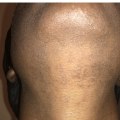Although laser hair removal offers a safe and effective way to get rid of unwanted hair, it may also cause changes in pigmentation in the treated areas. This can be a cause for concern, especially if you're not aware of the potential risks. In this article, we'll discuss the changes in pigmentation that can occur after laser hair removal, as well as what can be done to minimize or prevent them. We'll look at the causes of these changes, what to expect during and after treatment, and how to take steps to reduce the risk of changes in pigmentation.
We'll also provide tips on how to ensure the best results from your laser hair removal treatments. By understanding the changes in pigmentation that can occur after laser hair removal, you'll be able to make an informed decision about whether or not to proceed with treatment. The most common change in pigmentation associated with laser hair removal is hypopigmentation. This occurs when the treated area becomes paler than the skin around it. Hypopigmentation can be caused by a variety of factors, including the type of laser used and the individual’s skin type.
Other less common side effects include hyperpigmentation (darkening of the skin) and post-inflammatory hyperpigmentation (a condition where the skin becomes darker after inflammation from the laser). It’s important to note that changes in pigmentation after laser hair removal are usually temporary and will usually improve within a few months. However, in some cases, they can be permanent. In order to minimize the risk of changes in pigmentation after laser hair removal, it’s important to follow all of your doctor’s instructions before, during, and after treatment. This includes avoiding sun exposure and wearing sunscreen with an SPF of 30 or higher.
It’s also important to avoid tanning beds and other sources of UV light. In addition to changes in pigmentation, there are other physical risks associated with laser hair removal. These include burns, blisters, and scarring. It’s important to talk to your doctor about any concerns you may have before beginning treatment. Finally, it’s important to remember that laser hair removal is not a permanent solution. While it can reduce or remove unwanted body hair, it can take multiple treatments to achieve desired results.
Additionally, some people may need to undergo maintenance treatments over time to keep their results.
How Can I Minimize the Risk of Changes in Pigmentation?
In order to minimize the risk of changes in pigmentation after laser hair removal, it's important to follow your doctor's instructions before, during, and after treatment. This includes avoiding sun exposure and using protective clothing or sunscreen when outside, as well as avoiding any medications or products that could make your skin more sensitive to laser treatments. Your doctor may also recommend using a cold compress or moisturizer following the procedure. It's also important to avoid waxing, plucking, or electrolysis prior to laser hair removal, as these methods can increase the risk of pigmentation changes. Additionally, if you have a darker skin tone, be sure to talk to your doctor about the best laser settings for your skin type. Finally, it's important to follow all post-treatment instructions given by your doctor.This may include avoiding hot baths or showers, using a gentle cleanser, and avoiding any products that can irritate the skin.
What Are Other Physical Risks Associated With Laser Hair Removal?
Laser hair removal is a popular non-invasive treatment for reducing or removing unwanted body hair. While it’s generally safe and effective, there are some risks involved. In addition to changes in pigmentation, there are other physical risks associated with laser hair removal such as burns, blisters, and scarring. Burns can be caused by the laser’s intense heat, and blisters can form if the laser is used too frequently or for too long.Scarring can occur when the laser is used incorrectly, such as when it’s too close to the skin or set to too high of an energy level. It’s important to discuss all the risks associated with laser hair removal with your doctor before beginning treatment. Your doctor will be able to explain the risks and benefits of the procedure and help you make an informed decision. It’s also important to follow all of your doctor’s instructions during and after treatment to minimize the risk of any of these physical risks.
What Causes Changes in Pigmentation After Laser Hair Removal?
Changes in pigmentation after laser hair removal can be caused by a variety of factors including the type of laser used and the individual's skin type. The type of laser used to perform the treatment can have a huge impact on the risk of experiencing changes in pigmentation. Different laser types use different wavelengths of light to target the hair follicles, and these different wavelengths can affect how the skin reacts to the treatment. Skin type is another important factor that can cause changes in pigmentation after laser hair removal. Individuals with dark or tanned skin are more likely to experience changes in pigmentation than those with lighter skin tones.This is because darker skin tones absorb more light, which can lead to an increased risk of skin damage. Additionally, individuals with sensitive skin may be more likely to experience changes in pigmentation due to the treatment. It's also important to note that the area being treated can affect the risk of changes in pigmentation. Areas with thinner skin such as the face, neck, and chest may be more likely to experience changes in pigmentation due to laser hair removal.
Is Laser Hair Removal a Permanent Solution?
Laser hair removal is a popular non-invasive treatment for reducing or removing unwanted body hair. While it can be effective, it is not a permanent solution and some people may need to undergo maintenance treatments over time to keep their results.This is because the laser energy used during the procedure only damages the hair follicles that are in the active growth phase. As the follicles go through their natural growth cycle, other follicles may enter the active growth phase and require additional treatments to be eliminated. In addition, some people may find that their hair grows back gradually over time. This can occur due to hormones, genetics, or even lifestyle factors. The amount of regrowth and the frequency of follow-up treatments needed will depend on each individual’s individual circumstances.
For instance, those with hormonal imbalances or genetic conditions such as polycystic ovarian syndrome (PCOS) may find that their hair grows back more quickly than others. If you’re considering laser hair removal, it’s important to speak with your doctor about the potential risks and benefits. Discuss how many treatments will likely be needed to achieve the desired results, as well as how often follow-up treatments may need to be performed. It’s also important to ask about any changes in pigmentation that might occur after laser hair removal. Laser hair removal can provide an effective, non-invasive solution for reducing or removing unwanted body hair. However, it is important to be aware of the risks involved, including changes in pigmentation.
Patients should always consult their doctor prior to beginning treatment and should follow all instructions before, during, and after in order to minimize any potential side effects. While changes in pigmentation are a common side effect of laser hair removal, the risk can be reduced by choosing an experienced medical professional and choosing the right laser device for your skin type. It’s also important to protect the treated area from direct sunlight and to avoid other activities that can cause skin discoloration. In addition to changes in pigmentation, there are other physical risks associated with laser hair removal. These include scarring, pain, blistering, and infection. It is important to discuss any concerns with your doctor before beginning treatment. Laser hair removal is a popular non-invasive solution for reducing or removing unwanted body hair.
While it is generally safe and effective, it’s important to understand the risks involved and to follow all instructions before, during, and after treatment in order to minimize the risk of any side effects.







